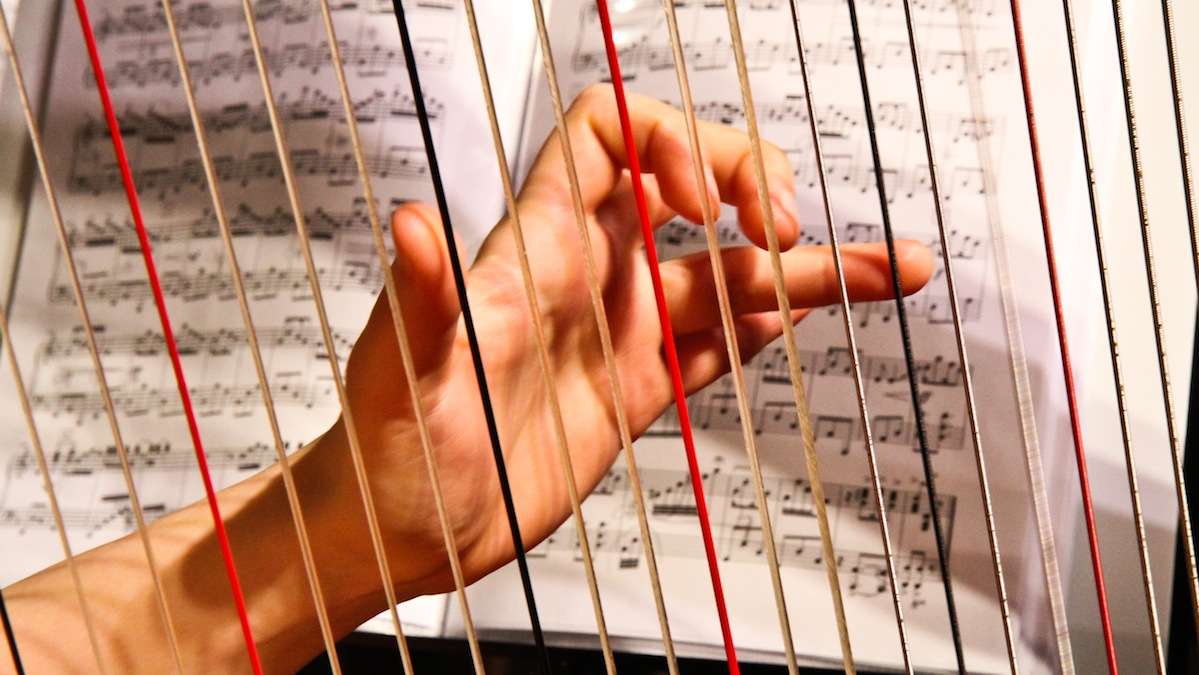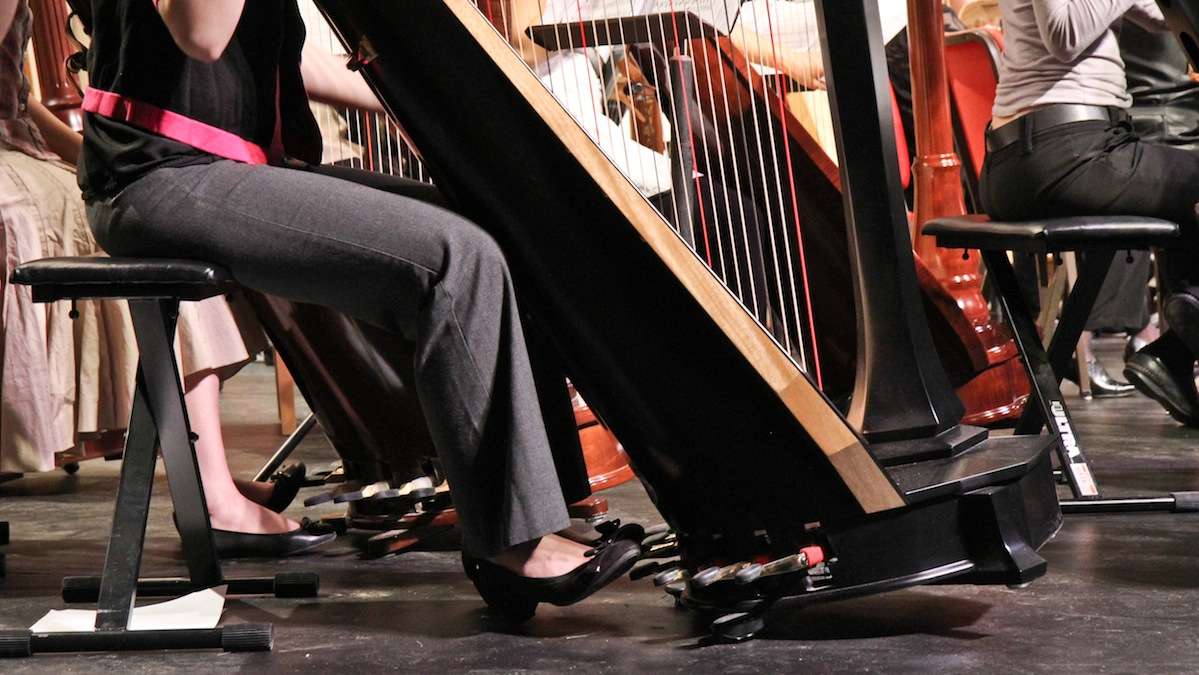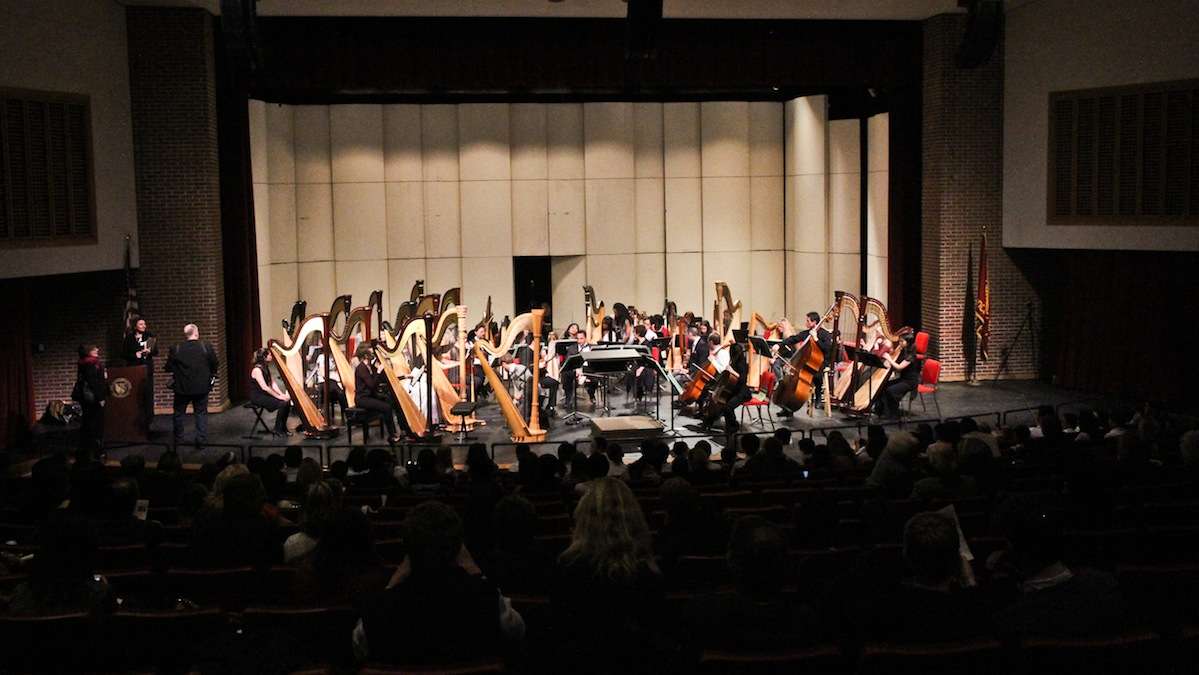A one-day symphony of harps brings Pa. players out of orchestral obscurity
ListenOver the weekend, 34 harpists converged at Haverford School to become an army of 2,000 strings.
The players ranged from amateurs to professionals — a 5-year-old beginner alongside the principal harpist from the Philadelphia Orchestra. En masse, the rhythms could be wobbly sometimes, with an occasional missed note, but the ladies (all the players were female) created a wall of sound rarely experienced by listeners or by musicians.
“It was crazy. Like nothing I’ve ever heard,” said Mia Venezia, 17, who has been playing harp for nine years. “It’s so nice to be with so many harps. Usually the harp isn’t heard.”
The Harp PlayIN was coordinated by the Philadelphia Orchestra, and headed by its principal harpist, Elizabeth Hainen. It is the second of four PlayINs scheduled this spring, which invites anyone with the ability to play certain instruments — the first was woodwinds, the next will be brass, then double basses — to come and play alongside that section of the orchestra.
The harp is unusual, because normally one harp suffices for a classical concert, not an entire section.
“There isn’t serious music that has this many harps, but some composers wrote for harps,” said Hainen. “Wagner, Berlioz and Mahler wrote works that call for many harps. Berlioz wrote in his ‘Symphonie Fantastique,’ ‘as many harps as possible.’ This would be his dream event.”
The harp’s sound is often used for the beauty of its delicacy, not its muscle. Put together 34 harps, with 68 hands plucking about 2,000 strings, and you have something to be reckoned with.
Make that 67 hands. Hanna Marion, 13, had broken her left arm in a snowboarding accident. She joined the fray with just one hand.
“It sounded pretty loud. The sound is really amazing,” said Hanna.
Hanna has been playing for six years, ever since she saw Hainen play at a Halloween party the girl’s parents took her to. To encourage the next generation of harpists, Hainen founded the Lyra Society, which promotes harp instruction in schools, providing teachers and instruments.
“Normally you wouldn’t have so many harps from so many levels,” said Elizabeth Steiner, the artistic coordinator of the Lyra Society, and a harp teacher at Philadelphia High School for Girls. “I wanted my students to meet other harpists, which they would not be able to do unless they pay a lot to go to a camp.”
The amateur players were joined by accomplished students at the Curtis Institute and the Temple University Symphony Orchestra, and some some professional players. They were accompanied by a handful of string players from the Philadelphia Orchestra.
Players who do not own their own instruments were provided one by the Lyra Society and the Virginia Harp Center of Haddonfield, N.J.
“Many harpists toil in isolation. We’re in our corners, and we don’t get to perform in a group as often as string players,” said Hainen. “It’s takes a lot of confidence to project your sound out there. There is strength in numbers.”
The next PlayIN, for brass instruments on April 10, will be doubtlessly louder, but perhaps not as resonant.
WHYY is your source for fact-based, in-depth journalism and information. As a nonprofit organization, we rely on financial support from readers like you. Please give today.













